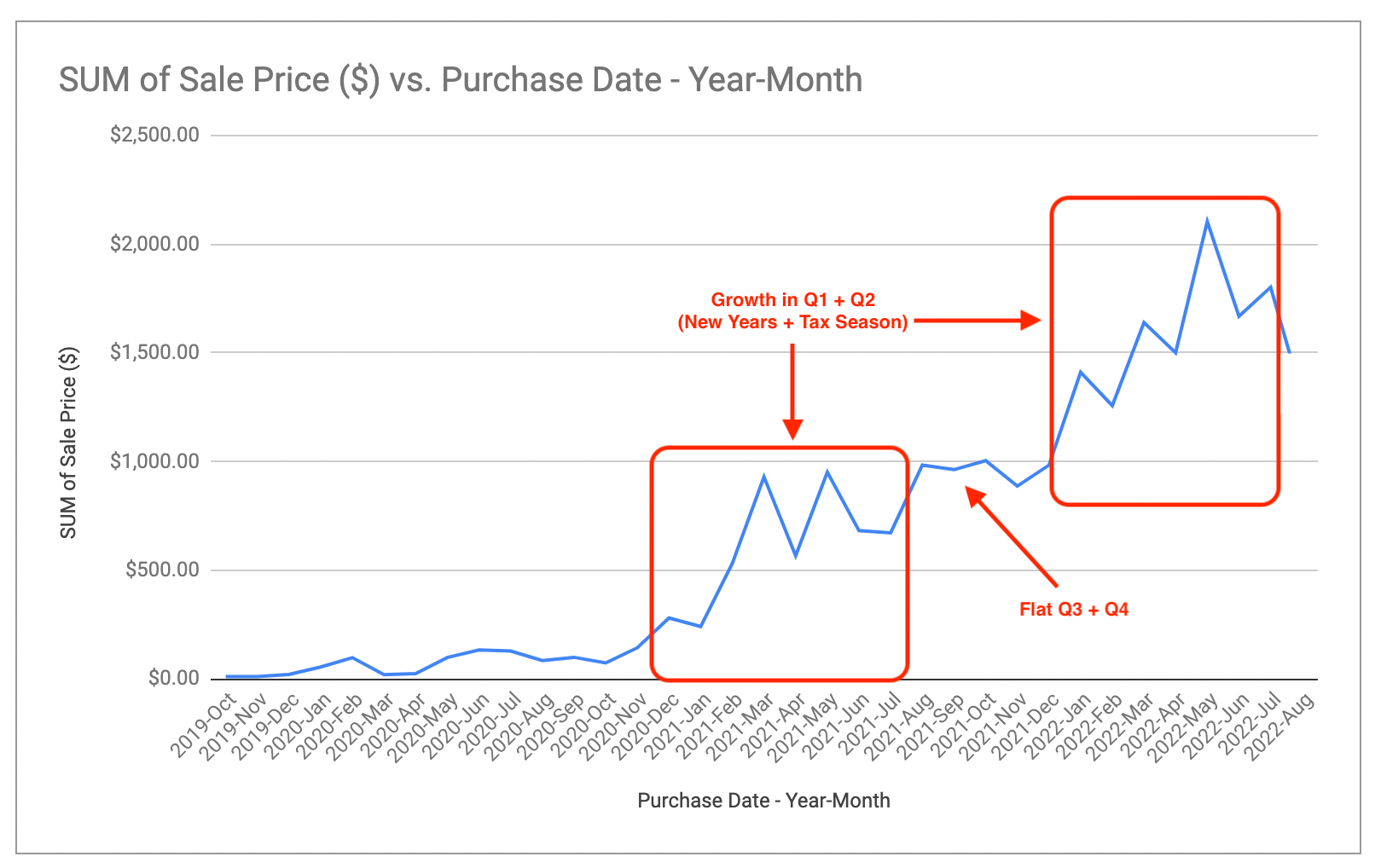
What I Learned Running a Seasonal SaaS Businesses
I created and run BudgetSheet – a Google Sheets Extension for importing bank transactions into Google Sheets via Plaid. Although people use it all throughout the year, it is a somewhat seasonal business. My best time of year for new signups and customer acquisition heavily skews to Q1 and Q2 – New Year’s Resolutions and Tax Season.
This is a summary of my experience running a seasonal SaaS business so far, and what you can also expect if you are planning to run one too (or accidentally found yourself running one like me!).
Most Growth Happens During The Busy Season
This is perhaps the most obvious point, and the one people immediately think about when considering a seasonal business. Most of your customer acquisition is compressed into a few months or weeks vs. being spread smoothly over the whole year.
This can be a double-edged sword, with some good things, some bad things, and some realities that you have to be prepared for in both. I will go into these areas more a bit later, but the the big downside here that no one really talks about is…
Most Churn Also Happens During The Busy Season
When you have a business where most of your customer acquisition is grouped into a few months out of the year, most of your churn will also happen in those same months on subsequent years – particularly with annual plans, which many SaaS products are so keen on pushing to users. I don’t highlight the annual plan over the monthly plan for BudgetSheet, but still almost 50% of my subscribers choose the annual plan.
Seeing so much churn happening all at once at the same times of year that are supposed to be your best times of the year for growth can be demoralizing. It’s a weird physiological thing where you are excited and looking forward to your best time of year, but then you see a massive spike in churn rates that cancel out some of that new growth – and some of your excitement along with it.
Natural Product Cycles Can Be Helpful
For some long time developers like me who have a hard time shifting to a “marketing” focus and prefer to spend their time coding away building ever more features, having a very clear “busy season” really helps me put on my marketing hat when the time comes. Instinctively, I know that the busy season is my one shot this year to make the biggest impact on marketing and conversions possible. It’s a good natural switch.
The seasonal aspect gives you a nice breather during the “off season” to think deeply about your product, make changes, add requested features, and tackle bigger problems that you may not have time for during the busy season. As long as you are good at doing this and making sure all the changes you make are done and ready for your busy season, it can be a nice cycle to work with and you can get a lot of focused work done with minimal impact to your customers.
Prime time (the “busy season”) is not the time to make big changes to your product, but it is a key time to focus on your marketing and advertising. With the increase in customers flowing into your product, you will also have to handle an elevated level of support emails, requests, and pre-sales questions. Quick an courteous responses can go a long way to closing the sale and maintaining happy customers.
Revenue Can Be More Stable Than You Think
Although your actual customer acquisition is compressed into a few months, with a SaaS business, the revenue continues all year long. This is of course the best part about running a SaaS that everyone talks about – recurring revenue. With a seasonal SaaS, the fact that most of your signups happen during a particular time of the year doesn’t necessarily mean that most of your revenue also happens during that time. It really depends on how your customers choose to pay. If they pay annually, then that might be more true than not. If they pay monthly, however, then the revenue for those customers will be spread more evenly over the year.
On top of that, customer growth and new signups still happen during off seasons (as well as churn) – but it happens slower than your busy season. This results in surprisingly stable revenue throughout the year for SaaS companies, even during the “off season”.
Go With The Flow, and Plan Accordingly
I didn’t explicitly choose a seasonal business – I just made something I wanted to use myself without thinking too much about how the business side of it was going to work. It turns out that a budget focused application is pretty seasonal – something that is obvious in hindsight.
I have learned to embrace the seasonal aspect of my business and plan for it, and it’s not a bad place to be for an indie maker. The best part about running a seasonal SaaS business is that you get to wear multiple hats, but you don’t have to wear them all at once – at least not always. 🎩
Discussion is on Hacker News.
Categories: Business, Software